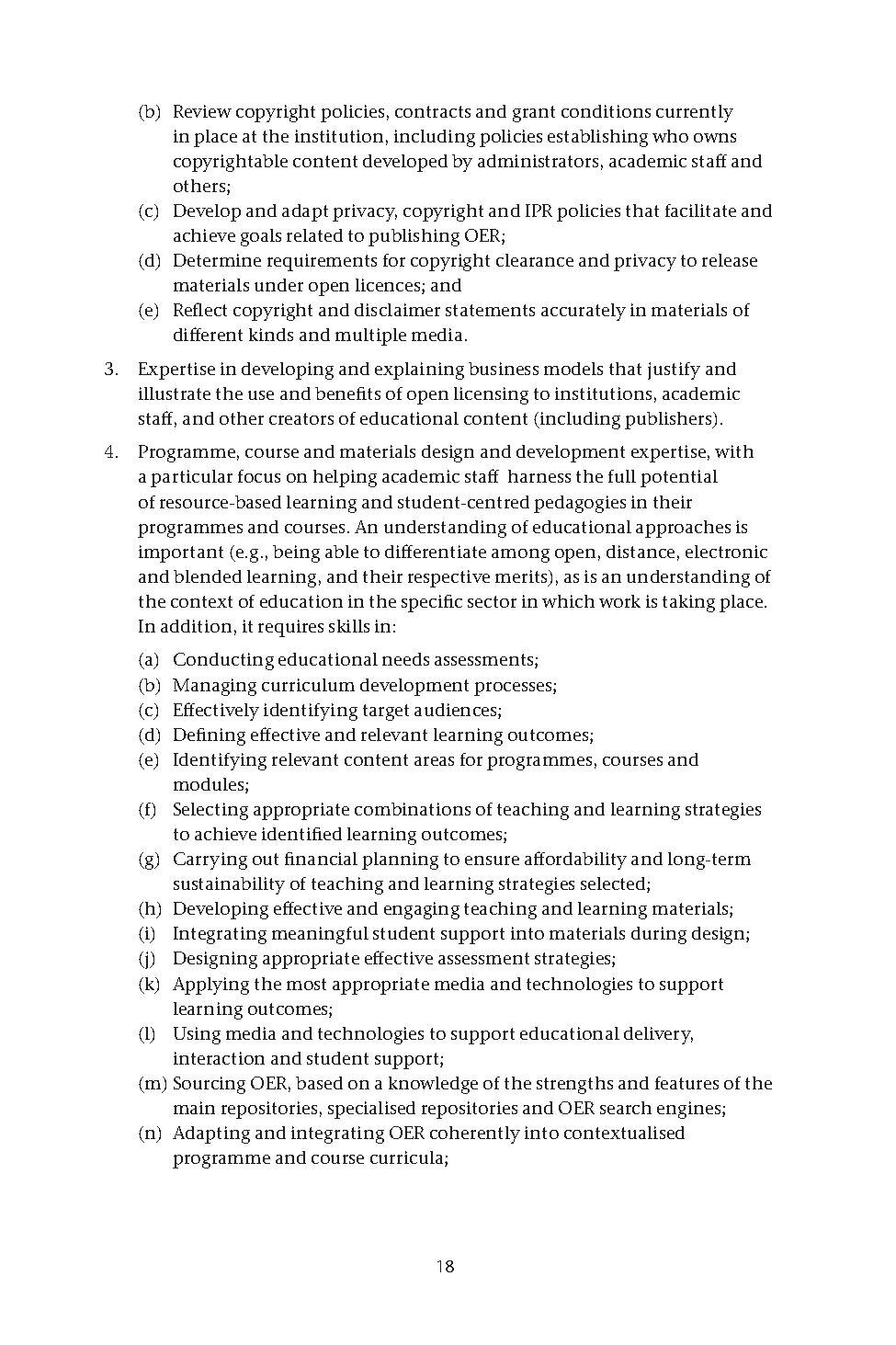This page has been validated.
- Review copyright policies, contracts and grant conditions currently in place at the institution, including policies establishing who owns copyrightable content developed by administrators, academic staff and others;
- Develop and adapt privacy, copyright and IPR policies that facilitate and achieve goals related to publishing OER;
- Determine requirements for copyright clearance and privacy to release materials under open licences; and
- Reflect copyright and disclaimer statements accurately in materials of different kinds and multiple media.
- Expertise in developing and explaining business models that justify and illustrate the use and benefits of open licensing to institutions, academic staff, and other creators of educational content (including publishers).
- Programme, course and materials design and development expertise, with a particular focus on helping academic staff harness the full potential of resource-based learning and student-centred pedagogies in their rogrammes and courses. An understanding of educational approaches is important (e.g., being able to differentiate among open, distance, electronic and blended learning, and their respective merits), as is an understanding of the context of education in the specific sector in which work is taking place. In addition, it requires skills in:
- Conducting educational needs assessments;
- Managing curriculum development processes;
- Effectively identifying target audiences;
- Defining effective and relevant learning outcomes;
- Identifying relevant content areas for programmes, courses and modules;
- Selecting appropriate combinations of teaching and learning strategies to achieve identified learning outcomes;
- Carrying out financial planning to ensure affordability and long-term sustainability of teaching and learning strategies selected;
- Developing effective and engaging teaching and learning materials;
- Integrating meaningful student support into materials during design;
- Designing appropriate effective assessment strategies;
- Applying the most appropriate media and technologies to support learning outcomes;
- Using media and technologies to support educational delivery, interaction and student support;
- Sourcing OER, based on a knowledge of the strengths and features of the main repositories, specialised repositories and OER search engines;
- Adapting and integrating OER coherently into contextualised programme and course curricula;
18
